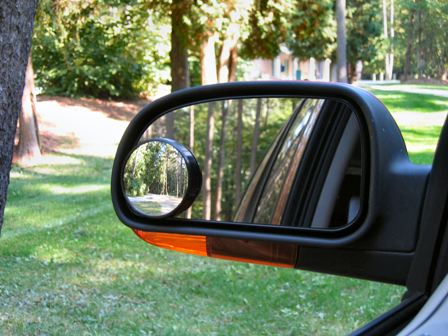 Pick a metaphor, any metaphor.
Long, long ago, in a discussion of mainstream media coverage of trends in Iran, Bill Moyers told me that most journalists are "tone deaf to the music of religion." He has used that same image in other settings.
Pick a metaphor, any metaphor.
Long, long ago, in a discussion of mainstream media coverage of trends in Iran, Bill Moyers told me that most journalists are "tone deaf to the music of religion." He has used that same image in other settings.
That words. Then again, senior scholar Roy Peter Clark of the Poynter Institute used another evocative image four years ago in his brutally candid reaction to the "values voter" mini-wave that brought President George W. Bush a second term in the White House. As a proud liberal and progressive Catholic, Clark was not amused by what he was reading about the religious conservatives who backed the GOP. He called his justly famous -- some would say "infamous" -- essay, "Confessions of an Alienated Journalist." Here's the key bite:
In my skeptic's mind, the expression "moral values" is nothing more than code language for showy piety and patriotism, with more than a dash of racism and homophobia. In my cynic's heart, I see Red, White, and Blue transformed by others into Guns, God, and Gays.
What am I missing? And what are you journalists not showing me?
Wait. I'm a journalist. I am that skinny guy in the mirror.
I don't know the difference between evangelical and charismatic, but I can argue about who has sluttier videos, Britney or Christina.
I know little about the "born again" experience but can celebrate the narrative structure of Queer Eye for the Straight Guy.
I've never listened to a religious radio program or attended a church supper, but I can tell you whatever you want to know about Howard Stern and Bubba the Love Sponge. ...
This is starting to sound like a confession. Maybe it is. I once was blind -- and still can't see. My blind spots blot out half of America. And that makes me less of a citizen, and less of a journalist.
Actually, he was saying that he suffered from a major blind spot -- singular -- when it came to the role of religion in the public square. Clark was wrestling with the fact that many mainstream reporters (not all, but many) often have trouble handling the intersection of faith and culture, especially the impact of traditional forms of religion in public life in America and around the world. He had a blind spot and it was painful to admit that it was affecting his work as a journalist.
This brings me, of course, to another plug for that book produced by my colleagues at the Oxford Centre for Religion & Public Life, entitled "Blind Spot: When Journalists Don't Get Religion." The book is now out and, should you want more info about it, click here. If you want to buy it, by all means click here.
This topic has, for nearly three decades now, been the wall on which I have chosen to pound my head. So you will not be surprised that I volunteered to write the "how to" chapter build on advice from some of nation's top reporters and editors on the religion beat. I offered a small piece of that puzzle in my Scripps Howard News Service column this week, marking the release of the book.
 The column opens with a war story from Richard N. Ostling of Time and the Associated Press and eventually, as we would say down South, I "went to meddlin' " and offered some practical advice.
The column opens with a war story from Richard N. Ostling of Time and the Associated Press and eventually, as we would say down South, I "went to meddlin' " and offered some practical advice.
The problem is that journalists who cover religion news -- along with those who cover other complicated beats such as science, sports, law and the arts -- must write stories that work on two levels. Their stories must be accessible enough for readers, yet accurate enough to pass muster with clergy, scholars and devout believers.
How can journalists "get" religion? How do we improve the odds that our newsrooms get it right? It's crucial that journalists find journalistic solutions to this journalism problem.
* Journalists must face this reality: It's impossible to understand what is happening in our world without understanding the power of religion in real life at the local, national and global levels.
* Journalists must be more humble and own up to our mistakes. In particular, we need to be more careful about our use of religious language, especially loaded labels such as "moderate" and "fundamentalist."
* Newsroom managers, even during these hard times, must seek out skilled professionals who want to work on this beat, while striving to promote cultural and intellectual diversity. They need to offer training to other journalists whose work constantly veers into religious territory. Today, religion stories are everywhere.
* Reporters and editors who cover religion must find ways to get inside the daily lives of the people they cover. When religious believers tell their stories, we have to understand what they are saying and try to accurately capture their point of view, even when what they believe is controversial.
The key, of course, is to recognize that what we have here is a journalism problem and that we must seek a journalistic solution.
I hope you check out the book and, if you are a journalist, suggest that your editors look it over. There will be a "Blind Spot" event early next semester at the Columbia School of Journalism in New York and we hope to have forums in other regions, as well. I'll keep you posted.
